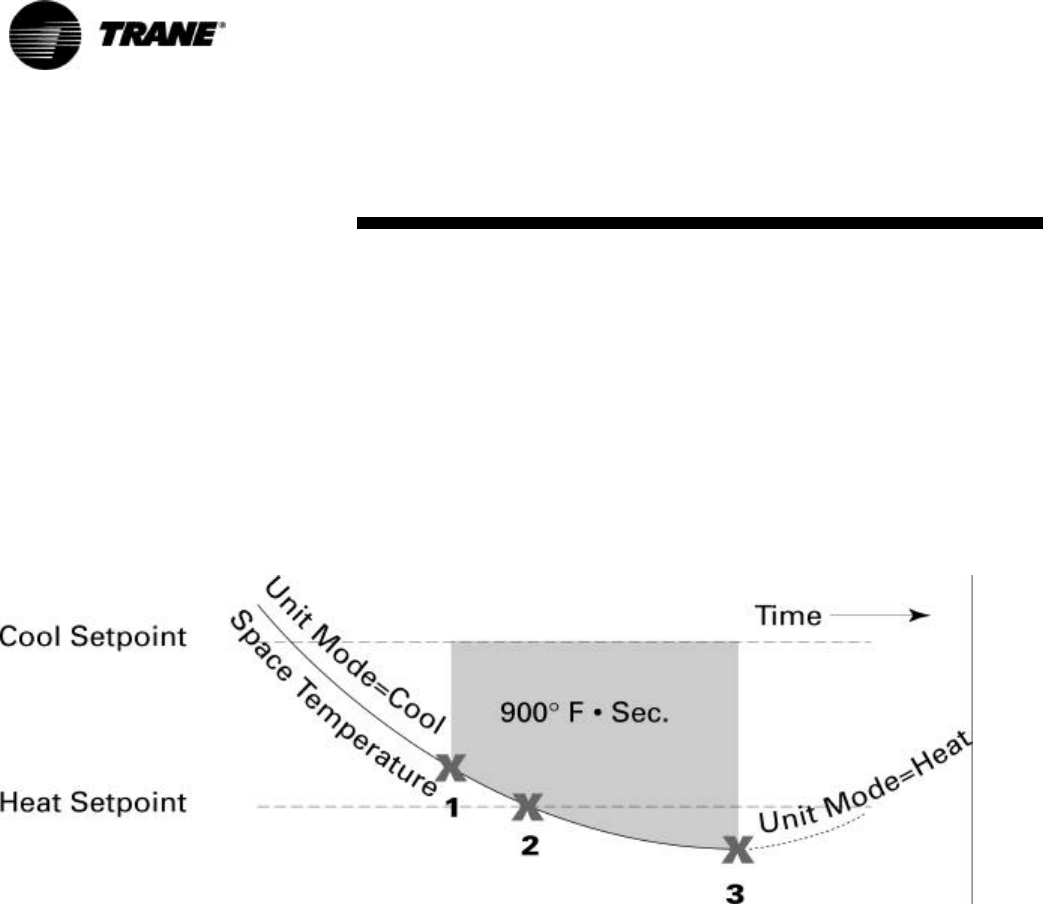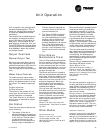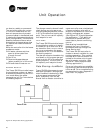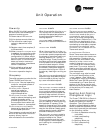
40 UV-SVP01A-EN
4 = Night Purge (air
changeover) not supported
5 = Pre-cool (morning cool
down)
6 = Off (no unit operation
allowed)
7 = Test (special test mode)
8 = Emergency Heat not
supported
9 = Fan Only (no heating or
cooling allowed)
All other enumerations will be in-
terpreted as Auto.
As the controller automatically de-
termines its heating or cooling
mode, it changes from cool to heat
or from heat to cool, while the error
(integrated over time between the
active setpoint and the space tem-
perature) is (900°FhSec). Integra-
tion only begins once the heating
and cooling capacity is equal to 0%
or the discharge air temperature is
being limited by the discharge air
temperature control limits.(See
Figure 17: “Heat/Cool Changeover
logic”).
Figure 17: Heat/Cool Changeover logic
If the measured space temperature
is 69 °F and the active cooling set-
point is 72 °F, the error between
the space temperature and the set-
point is three degrees. If the same
error exists for one minute (60 sec-
onds), the integration term is
(3 °Fh60 Sec) or (180 °Fh Sec).
The Tracer™ ZN.520 Unit Control-
ler changes from heating to cool-
ing and cooling to heating when
the integration term exceeds
(900 °FhSec). Along with satisfy-
ing the integration for heating and
cooling changeover, the measured
space temperature must fall out-
side the setpoint range. This
means the space temperature
must be greater than the active
cooling setpoint or lower than the
active heating setpoint.
Example: If the cooling setpoint is
75°F and the heating setpoint
70°F, any space temperature
greater than 75°F or less than 70 °F
is outside the setpoint range.
Once the integration term is satis-
fied and the space temperature is
outside the setpoint range, the
controller changes modes. Howev-
er, before the unit's heating or
cooling capacity ramps up, the
controller checks to make sure it is
capable of heating or cooling.
For some units, heating and cool-
ing capability exists with local re-
sources such as electric heat or
compressors. For these units, cen-
tral heating or cooling plan opera-
tion is not required for heating or
cooling because they are capable
of providing their own local heat-
ing or cooling.
For 2-pipe changeover and 4-pipe
changeover units with hydronic ca-
pacity, heating and cooling is pro-
vided through hydronic. For those
hydronic, central heating or cool-
ing plant operation is required for
the unit to deliver heating or cool-
ing. To determine whether the cen-
tral plant is providing the desired
water temperature, an entering
water temperature sensor (either
hardwired or communicated) must
be present.
Unit Operation


















